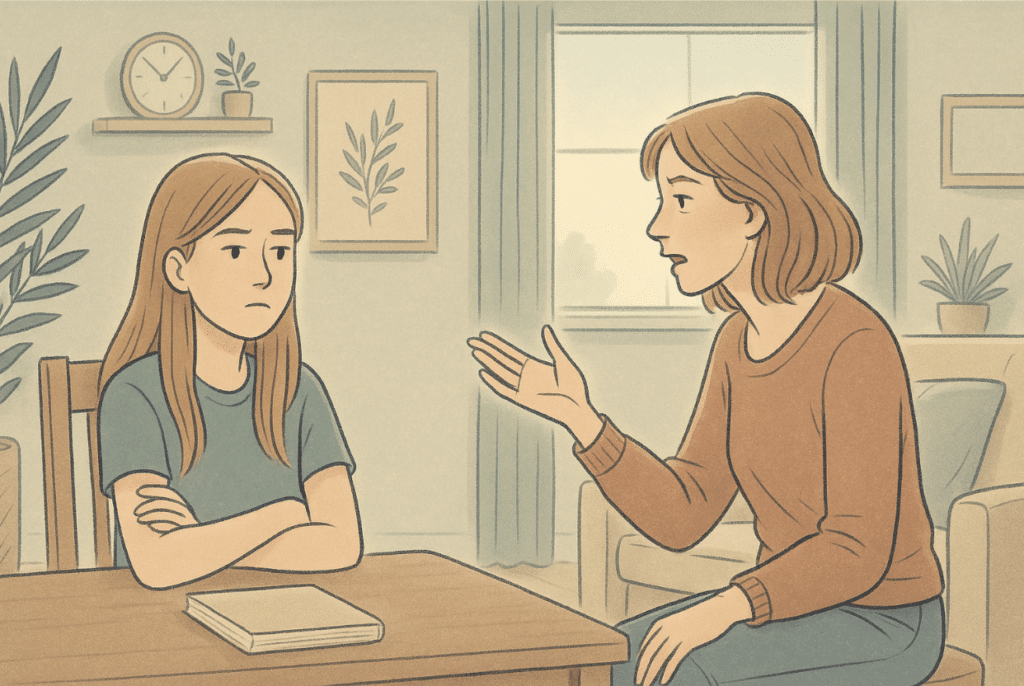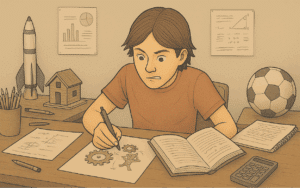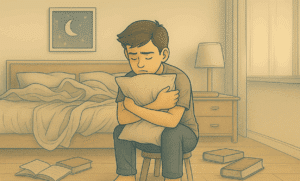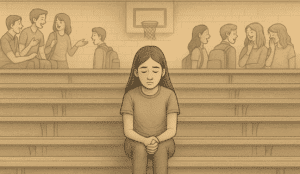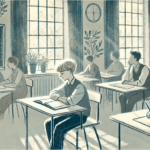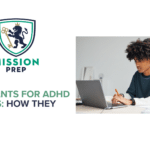Key Takeaways
- Girls with ADHD often present with inattentive symptoms rather than hyperactivity, making their condition less obvious and frequently overlooked.
- Common symptoms in girls include daydreaming, emotional sensitivity, difficulty with organization, and social struggles that may be mistaken for personality traits.
- ADHD symptoms in girls evolve with age, with new challenges emerging during transitions to middle school and high school.
- Early identification and appropriate support can significantly improve outcomes and self-esteem for girls with ADHD.
- Mission Prep Healthcare specializes in identifying ADHD in adolescent girls through comprehensive, gender-sensitive assessments that capture symptoms often missed in traditional evaluations, leading to personalized treatment for lasting success.
Understanding ADHD in Girls
ADHD affects approximately 5% of children, but girls are diagnosed at only half the rate of boys. This discrepancy doesn’t mean girls are less likely to have ADHD; rather, their symptoms often manifest differently and may be misinterpreted as personality traits, anxiety, or simply “being a girl.”
Most girls with ADHD predominantly display inattentive symptoms rather than the hyperactive-impulsive behaviors more common in boys. When hyperactivity does appear in girls, it often takes more subtle forms like excessive talking, emotional reactivity, or internal restlessness that’s less disruptive to others.
This presentation makes their ADHD less obvious to parents and teachers who might be looking for the stereotypical fidgeting and classroom disruption. The consequences of this missed or delayed diagnosis can be significant, affecting academic performance, social relationships, and emotional well-being during critical developmental years.
| Mission Prep Healthcare: Adolescent Mental Health Care Mission Prep Healthcare specializes in mental health treatment for teens aged 12-17, offering residential and outpatient programs for anxiety, depression, trauma, and mood disorders. Our therapies include CBT, DBT, EMDR, and TMS, tailored to each adolescent’s needs. With a structured, supportive environment, we integrate academic support and family involvement to promote lasting recovery. Our goal is to help teens build resilience and regain confidence in their future. Start your recovery journey with Mission Prep Healthcare today! |
Why Girls Go Undiagnosed
The underdiagnosis of ADHD in girls stems from multiple factors. Traditional ADHD diagnostic criteria were developed based primarily on studies of boys, creating an inherent gender bias in how we recognize the condition.
Additionally, societal expectations that girls should be well-behaved, organized, and attentive mean that girls often work harder to compensate for their ADHD-related challenges, effectively hiding their symptoms from observers.
Because girls tend to internalize their struggles rather than act out, their difficulties are less likely to disrupt the classroom or draw attention from teachers who might otherwise recommend evaluation.
This internalization can transform into anxiety, depression, or low self-esteem as girls blame themselves for their challenges rather than recognizing them as symptoms of a treatable condition.
ADHD Symptoms Checklist for Girls
Inattentive Signs
Girls with inattentive ADHD often appear quiet in the classroom, but display the following symptoms:
- Frequently daydreaming or appearing “in your own world.”
- Making careless mistakes despite being intelligent.
- Difficulty following multi-step instructions.
- Struggling to maintain focus except on highly engaging activities.
- Repeatedly losing or misplacing items like homework, phones, or personal belongings.
- Appearing to not listen when spoken to directly.
- Having trouble with time management and frequently underestimating how long tasks will take.
These challenges are not a result of quietness or compliancy but rather an inability to maintain focus due to ADHD. If you regularly exhibit these behaviors, it may be worth discussing them with a mental health professional.
Emotional Symptoms
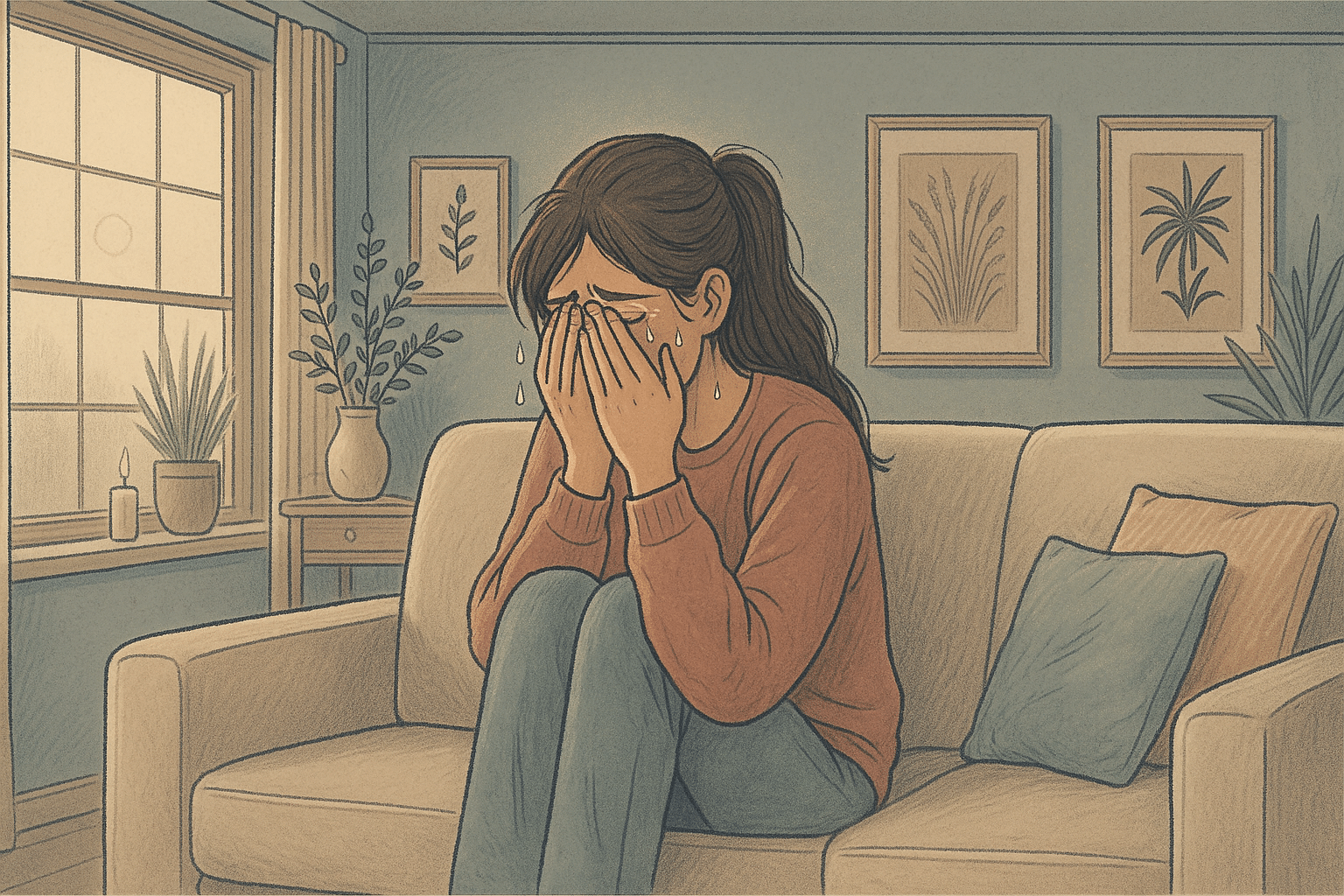
Emotional dysregulation is a core feature of ADHD in girls that often gets misattributed to personality or hormones.
You might experience intense emotional reactions that seem disproportionate to the situation, have difficulty transitioning between emotional states, or become easily overwhelmed by feelings.
Rejection sensitivity dysphoria (RSD) is also particularly common in girls with ADHD. This manifests as an extreme emotional pain in response to real or perceived rejection, criticism, or failure.
You may go to great lengths to avoid situations where you might be judged or rejected, limiting your willingness to try new experiences or take social risks that are important for development.
Academic Struggles
Academic difficulties often intensify during middle and high school as organizational demands increase. You might procrastinate on assignments until the last minute, struggle with long-term projects requiring sustained effort, or have difficulty transitioning between subjects. You may forget to turn in completed homework or lose track of deadlines despite genuine efforts to stay organized.
Additionally, girls with ADHD often perform brilliantly on topics that interest them while struggling disproportionately with subjects they find less engaging. This uneven profile can confuse teachers and parents, leading to comments like “She can focus when she wants to” that mischaracterize ADHD as a willpower issue rather than a neurodevelopmental condition.
Social Challenges
You might struggle to maintain friendships, miss social cues, interrupt conversations, or have difficulty following the natural give-and-take of peer interactions.
This is why some girls with ADHD become social chameleons, mimicking others’ behaviors to fit in while feeling internally disconnected or inauthentic.
Hidden Hyperactivity Symptoms of ADHD in Girls
While girls with ADHD often present with primarily inattentive symptoms, hyperactivity can still be present; it just looks different than the stereotypical boy running around the classroom.
Internal Restlessness
Many girls with ADHD experience what we call “hidden hyperactivity,” an internal sense of restlessness that isn’t immediately visible to observers. You might describe your mind as “always racing” or feeling like you can’t relax even when physically still.
This internal hyperactivity can be exhausting, as you’re constantly managing an overactive mind while trying to maintain external composure.
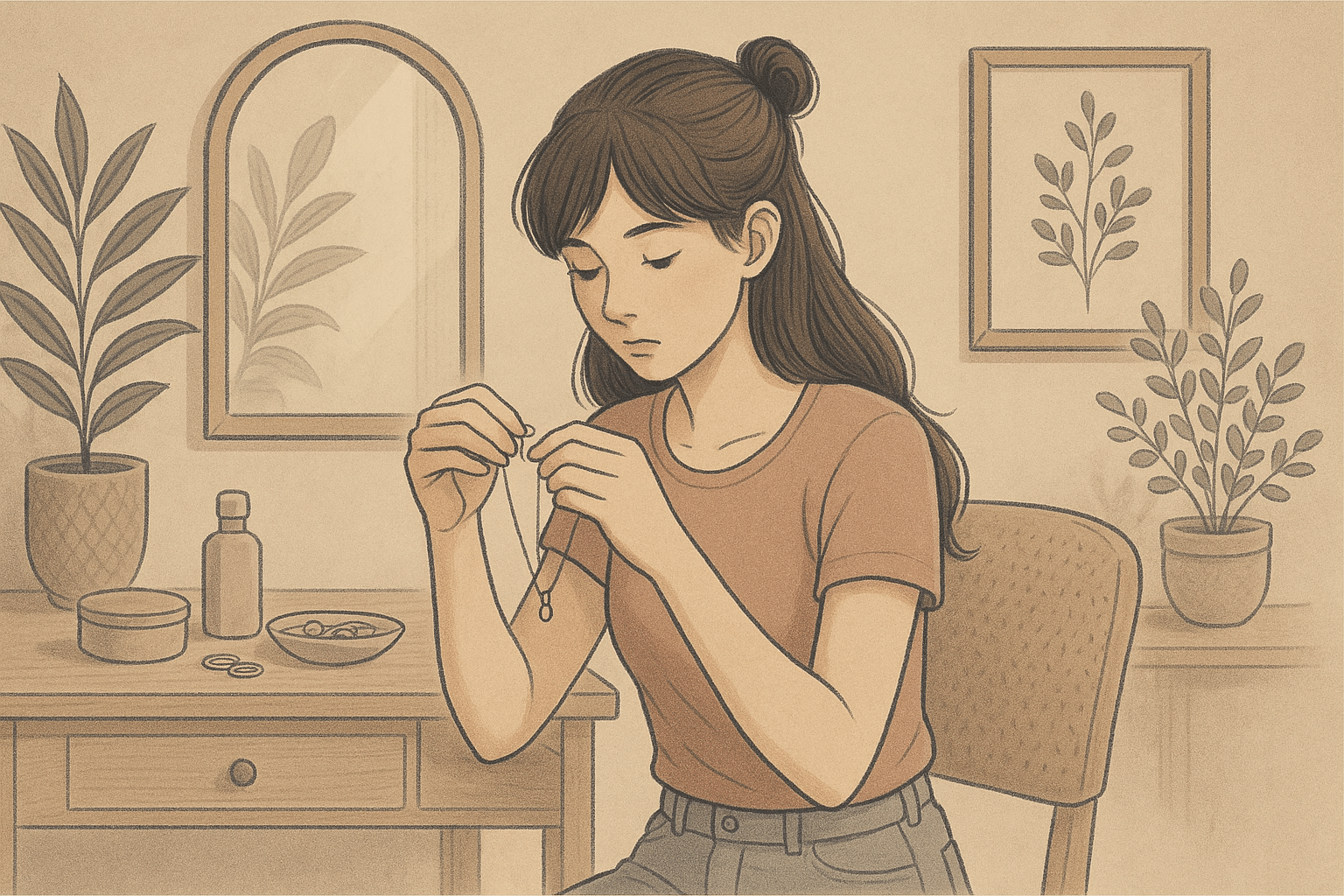
Girls often channel this restless energy into more socially acceptable behaviors like fidgeting with jewelry, twirling hair, or doodling extensively during class.
You might also constantly bite your nails, pick at your skin, or constantly readjust your clothing, subtle physical manifestations of the internal motor restlessness characteristic of ADHD.
Talking Too Much
Excessive talking is a common but often overlooked manifestation of hyperactivity in girls with ADHD. You might talk rapidly, switch topics frequently, or share thoughts as they occur without filtering or considering context.
You may interrupt conversations, finish others’ sentences, or provide excessive detail when telling stories, behaviors that can strain peer relationships despite your genuine desire to connect.
This verbal hyperactivity typically intensifies in exciting or stimulating environments.
Emotional Impulsivity
Emotional hyperactivity often manifests in relationship conflicts, particularly with parents and close friends. You might say things impulsively when upset that you later regret, struggle to let go of perceived slights, or become overwhelmed by emotional flooding that makes rational problem-solving temporarily impossible.
At Mission Prep Healthcare, we help girls develop emotional regulation strategies that acknowledge this neurobiological challenge while building skills for better self-management.
Treatment Options for ADHD
Therapy Approaches
Several therapeutic approaches have proven effective for girls with ADHD. Cognitive Behavioral Therapy (CBT) helps identify and modify negative thought patterns while developing practical strategies for managing ADHD-related challenges.
Dialectical Behavior Therapy (DBT) techniques can be particularly helpful for girls struggling with emotional regulation and interpersonal effectiveness.
Skills Training
Targeted skills training addresses specific ADHD-related challenges while building capabilities that support long-term success. Executive function coaching focuses on developing organizational strategies, time management skills, planning techniques, and study methods customized to your learning style and specific areas of difficulty.
These practical approaches provide immediate support while building skills that will serve you throughout life.
Beyond Medication
While medication can be an effective component of ADHD treatment, it’s rarely sufficient on its own. Lifestyle modifications like regular physical exercise, adequate sleep, proper nutrition, mindfulness practices, and reduced screen time can significantly improve attention, reduce impulsivity, and enhance emotional regulation.
These approaches complement other treatments while promoting overall health and well-being.
When to Seek Help
The decision to seek professional evaluation for ADHD should be based on how symptoms impact your functioning rather than symptom count alone.
At Mission Prep Healthcare, we recommend considering an assessment when ADHD-related challenges cause persistent difficulties in multiple settings (home, school, social) and impact your emotional well-being, academic performance, or self-esteem.
Mission Prep’s ADHD Support for Girls

At Mission Prep, we’ve dedicated our expertise to understanding and creating a safe environment to treat the complex presentation of ADHD in adolescent girls.
Our specialized assessment protocols go beyond traditional diagnostic methods to identify the inattentive symptoms, emotional dysregulation, and executive function challenges that characterize ADHD in girls.
We provide comprehensive, evidence-based treatment approaches that address both the neurobiological aspects of ADHD and the secondary emotional impacts that often accompany years of unrecognized struggle.
Through individual therapy, family counseling, and targeted skill-building interventions, we help teenage girls develop positive self-identity, effective coping strategies, and the confidence to thrive academically and socially.
If you recognize yourself in these symptoms, professional support can transform your understanding from “different” or “struggling” to empowered and capable of success.
Frequently Asked Questions
Can girls have ADHD without hyperactivity?
Yes, absolutely. Many girls with ADHD present with predominantly inattentive symptoms and minimal hyperactivity. This presentation, formerly called ADD, is now classified as ADHD, Predominantly Inattentive Presentation.
Girls with this type of ADHD struggle with focus, organization, time management, and completing tasks but don’t show the obvious hyperactive behaviors that often prompt evaluation in boys.
At what age can ADHD be diagnosed in girls?
ADHD can be diagnosed as early as preschool age, though it’s often more difficult to distinguish from typical developmental variations in very young children. Most girls receive their diagnosis during elementary school years or later, with many not being identified until adolescence or even adulthood.
This delayed diagnosis often occurs because their symptoms become more apparent as academic and social demands increase, overwhelming their previously effective compensatory strategies.
How does puberty affect ADHD symptoms in girls?
Puberty often intensifies ADHD symptoms in girls due to hormonal fluctuations that interact with neurotransmitter systems already affected by ADHD. Many girls report that their ability to focus, regulate emotions, and manage impulses varies throughout their menstrual cycle, typically worsening during the premenstrual phase when estrogen levels drop.
This hormonal influence can make symptoms seem inconsistent, further complicating diagnosis and treatment.
How does Mission Prep’s approach to ADHD assessment differ for adolescent girls?
At Mission Prep Healthcare, we use specialized, gender-sensitive assessment tools specifically designed to capture the unique presentation of ADHD in girls. Unlike traditional evaluations that focus on disruptive behaviors more common in boys, our comprehensive approach examines inattentive symptoms, emotional dysregulation, masking behaviors, and executive function challenges that characterize ADHD in girls.
We also provide a safe, supportive environment where girls can openly discuss their experiences without fear of judgment.


